
How Plaid’s support team improved their average ticket resolution time by 80%
About
Plaid is the biggest integration platform for financial data. To support integrations for 11,000+ financial institutions and millions of users, it needed a best-in-class CX application.
If you've ever securely signed into your bank from another app or website, you've likely used Plaid. Plaid is the biggest financial services platform integrated with more than 11,000 financial institutions and serving millions of people. The customer support team, tasked with supporting each integration, desperately needed new tooling to keep up. When these integrations had issues, support agents would have to investigate across fragmented and siloed tools: internal databases and logs, Zendesk, Jira, Slack, and more.
Plaid support engineer Chris O’Neill knew these challenges firsthand from years spent in the trenches as a support rep. He later transitioned to a technical role and helped to bring Retool as their platform to provide reps with one unified experience to get the context they needed on integration health and resolve tickets faster. The support team leveraged Retool’s drag-and-drop building blocks and library of pre-built integrations to connect existing data sources and iterate quickly on the interface.
It turned out to be a timely decision. Plaid soon thereafter launched the consumer-side of the business. As the company underwent rapid changes to the product and the team, Plaid’s support team shined through—speeding up their average ticket resolution time by 80% as they tripled in size.
Read on to learn how they did it. And see how companies like DoorDash, Snowflake, and Brex build custom support tools in hours with Retool.
Handling product support for 11,000+ integrations
In 2018, Plaid had doubled their customer base, grew to 175 employees, and raised a $250M Series C round. However, like any fast-growing startup, there were growing pains:
The product support team was overwhelmed with the task of supporting the 11,000+ financial institutions (and counting) linked by Plaid. These financial integrations enabled users of apps like Venmo and SoFi to securely link their bank accounts in just a few clicks. While the experience was magical and seamless for end users, the workflow to diagnose issues when they arose was complex and time consuming for the product support team.
Disparate data, slower resolution times
For Plaid’s 70-person support team, investigating financial integration tickets involved digging through several tools in search of a resolution: from internal databases, to Zendesk, Jira, Slack, and their CRM.
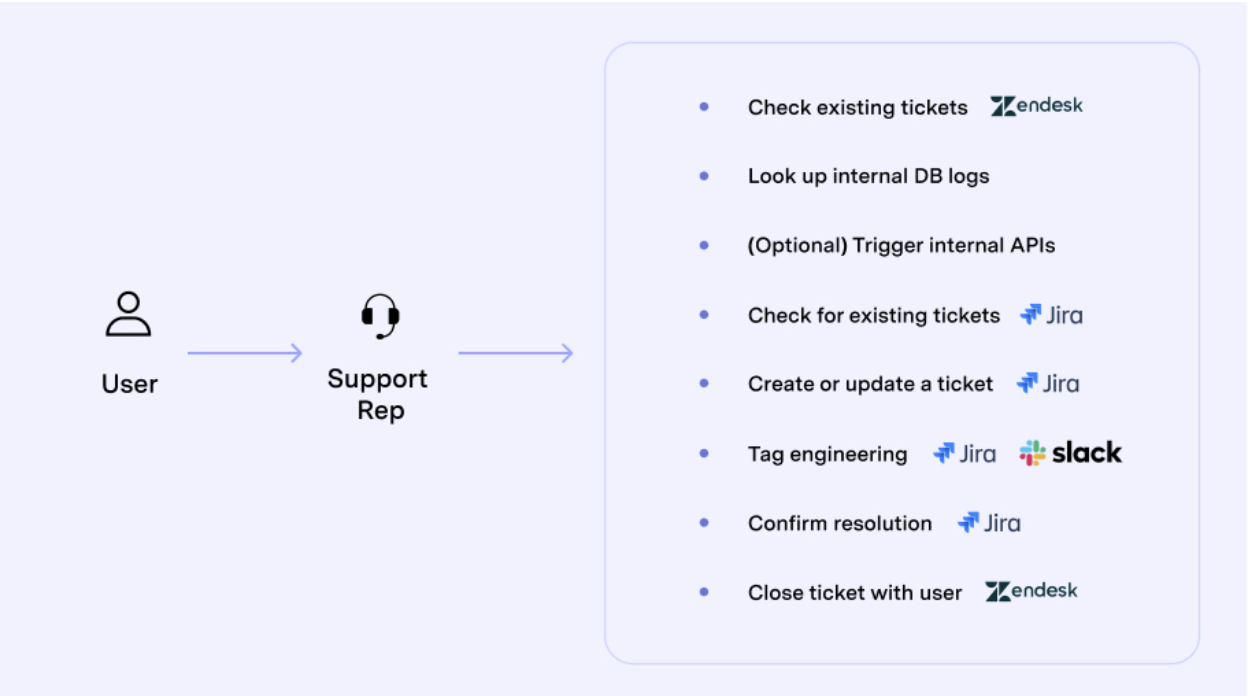
Chris O’Neill knew this firsthand as a member of the product support team for nearly a year and a half. When he transitioned to technical support engineering, Chris found himself in a position where he could build internal apps to help the broader support team handle and resolve tickets better and faster. And with the consumer-facing side of the business about to take off, introducing a slew of new support workflows, it turned out to be a timely decision that would have a huge impact on productivity as the team scaled.
Legacy tooling was costly to maintain
Chris knew he needed a custom solution. Many of the support workflows, particularly those around financial integration health, touched on internal processes and tools. One option was to build on top of the legacy homegrown system. But manually connecting to siloed and fragmented systems would be a painstaking effort:
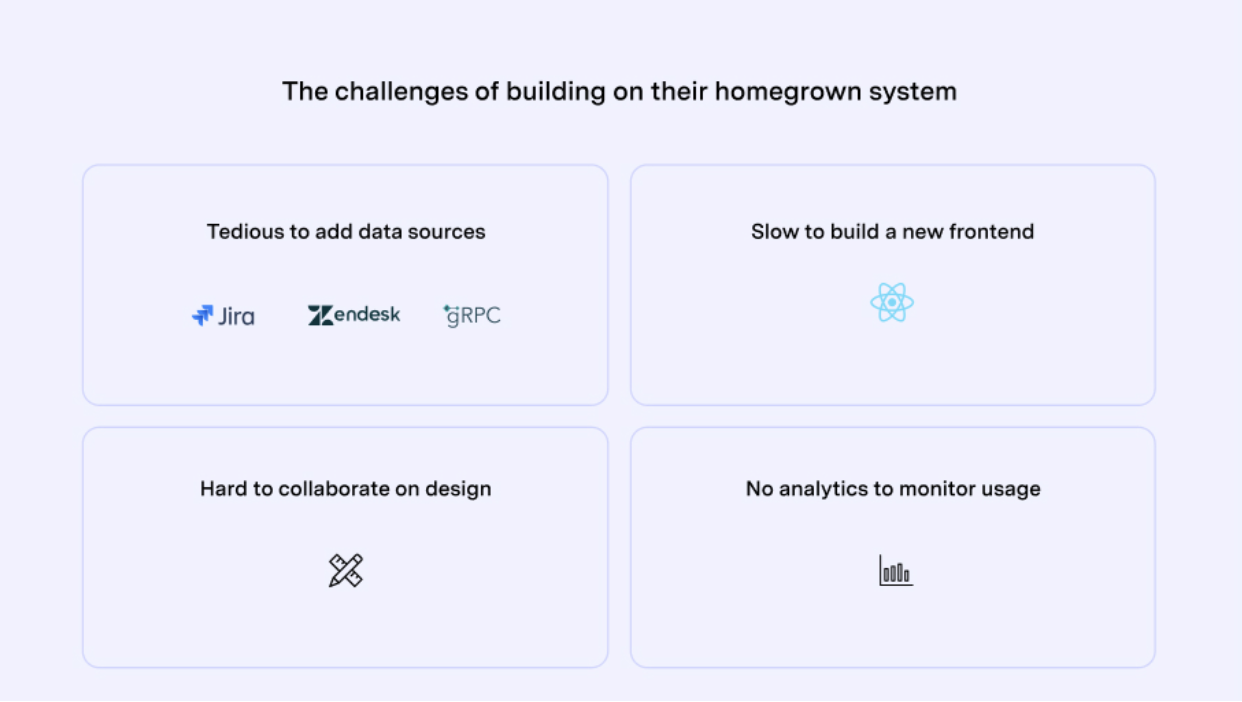
With resources already spread thin, this level of engineering effort was a non-starter: “We couldn’t justify the development costs to work on our traditional internal tooling to solve for something like this.”
This is something that we commonly hear among customer support teams: they often need new or updated support tools, but their requests are lost in their engineering team's backlog.
Choosing Retool as the platform for custom support tools
When a colleague mentioned Retool as a potential solution, it immediately eased concerns around engineering blockers: “Retool was a different conversation. We could actually spin up a new workflow in a matter of hours. There’s no deployment pipeline to speak of. There are no code reviews where delays are fully out of our control.” What they’d find was that building on top of an existing platform like Retool would abstract away a lot of the manual development effort faced when working with their homegrown system.
Chris moved fast to implement Retool on top of Plaid’s internal tools framework. Given the framework interacted with most of their internal databases via gRPC, this gave him a jumpstart to get going on the institution health app he wanted to build. Soon enough he had put together a central dashboard. Each support rep now had complete context around the health of each of their thousands of financial integrations:
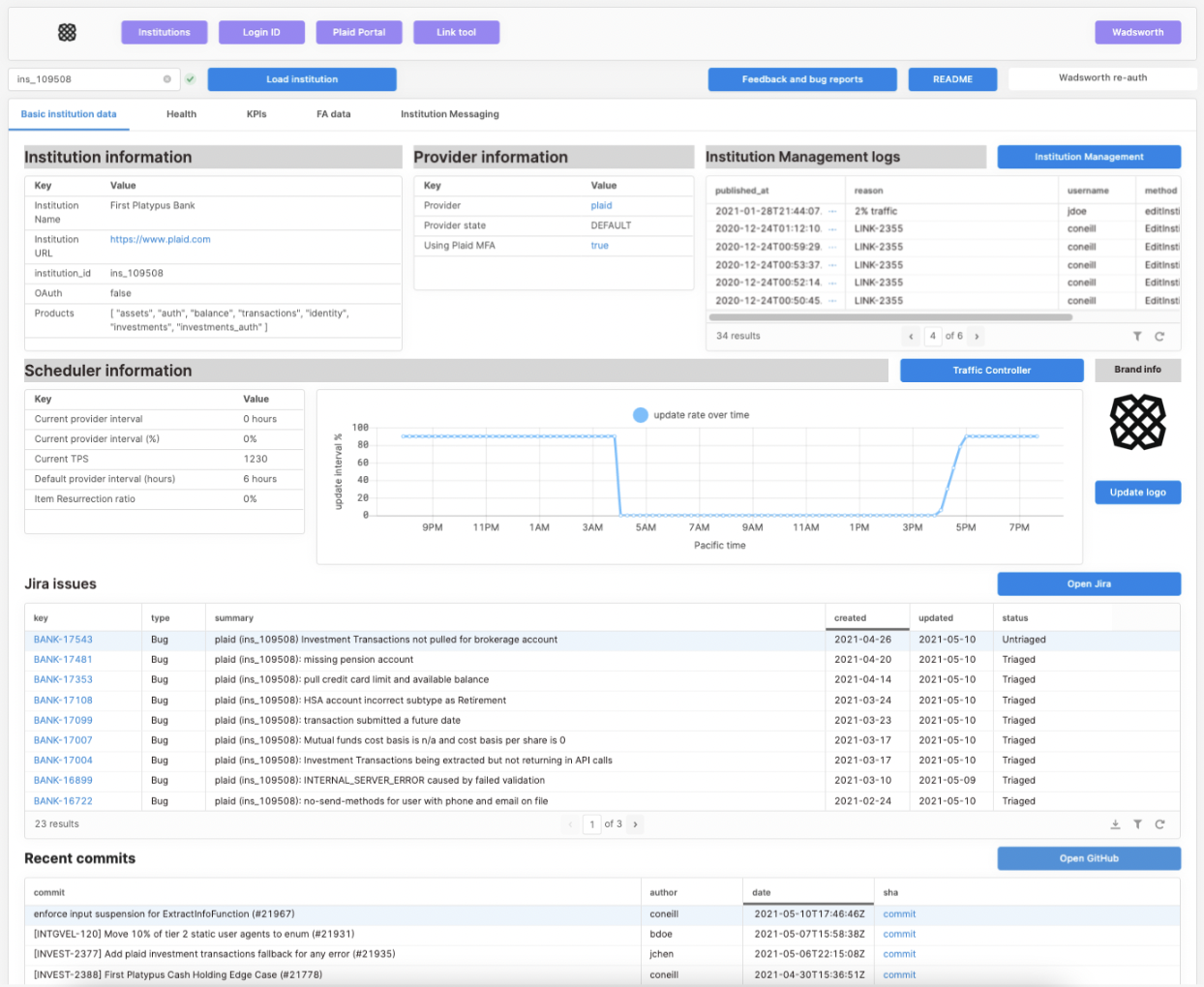
Reps would also be able to navigate to a `Health` tab within the app where they can dig into real-time health metrics without leaving Retool:
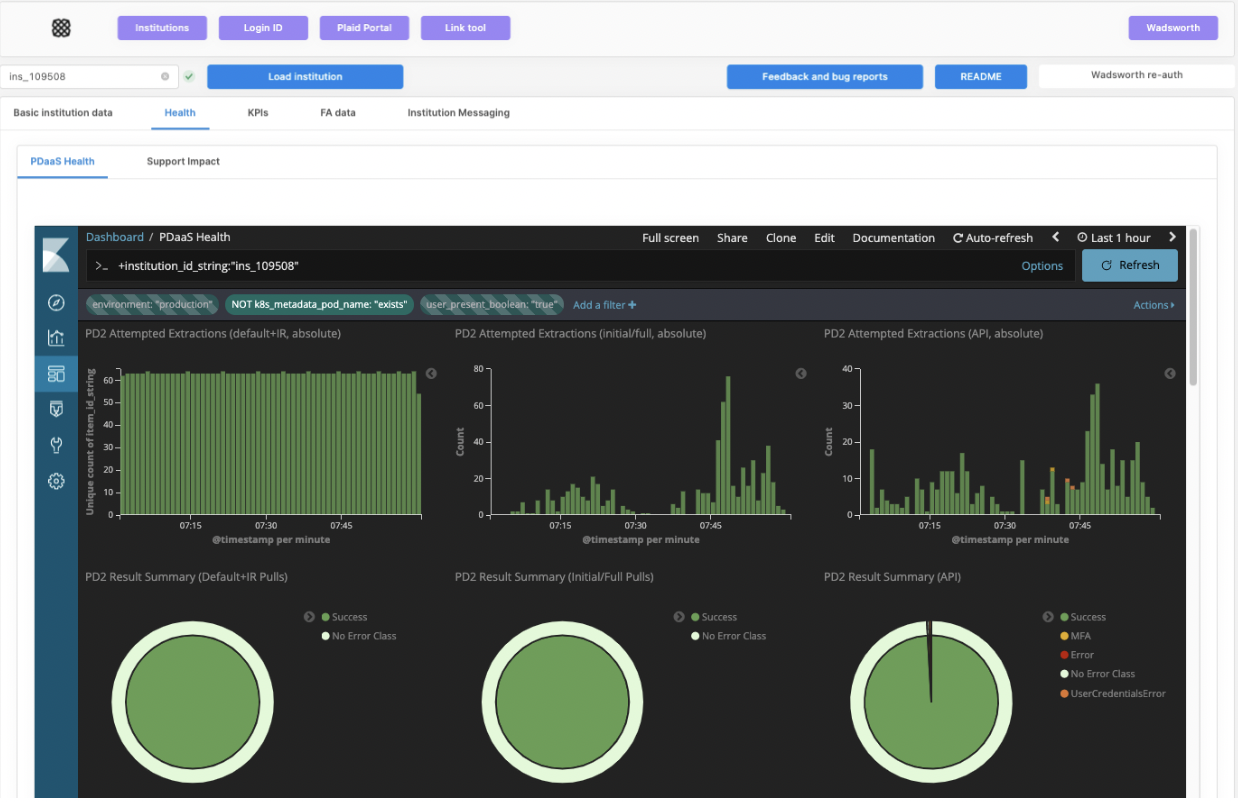
Adding Jira workflows
Retool’s pre-built integrations made it easy to connect with third-party tools like Jira. It was so easy that other support reps jumped in on their own to add more integration features that fit their workflow:
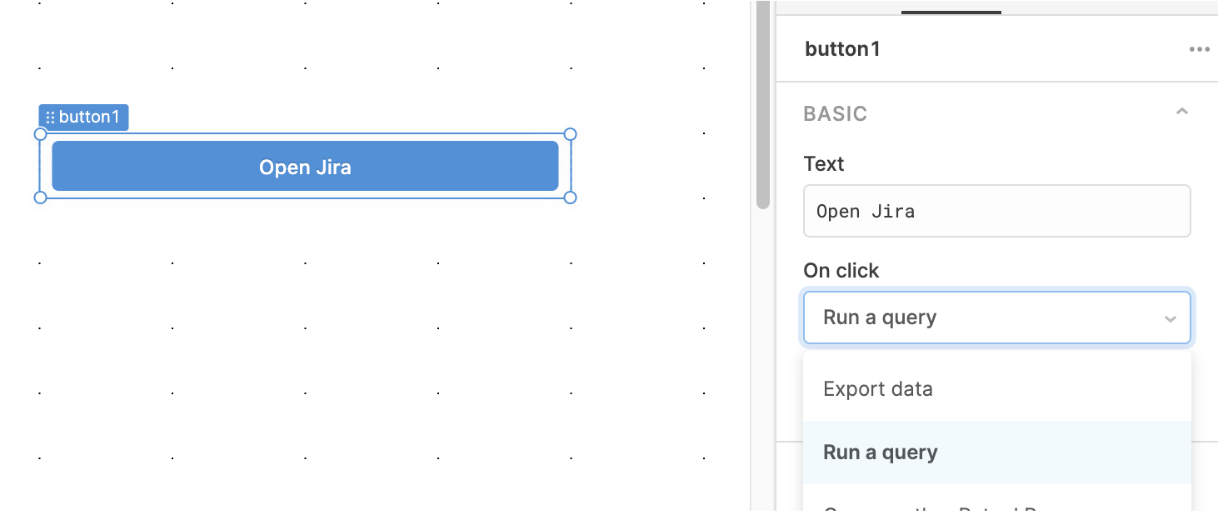
This enabled support reps to create a Jira ticket directly from the internal app when something looked wrong. And the ticket would be pre-populated with relevant institution data. It was a workflow Chris had not scoped or admittedly thought about before, but his teammate was able to jump into Retool and build that functionality in.
My colleague might not have had the ability to add this functionality in our legacy system. But the more accessible nature of Retool allows for this kind of iteration. You can solve other relevant use cases and add them on since the cost of development is so much lower. – Chris O’Neill
Iterating on the support interface
Extending existing infrastructure from Retool changed the game on the frontend as well. Historically, Chris and his team would have to do heavy research and validation before investing in building a UI for the team to test—after all, it required weeks of work to make it happen.
Given each UI took minutes to build, Chris could just walk over to the support team and sit with them for a few hours. He could then create multiple iterations of the same app and test them live with support reps to understand which way to go:
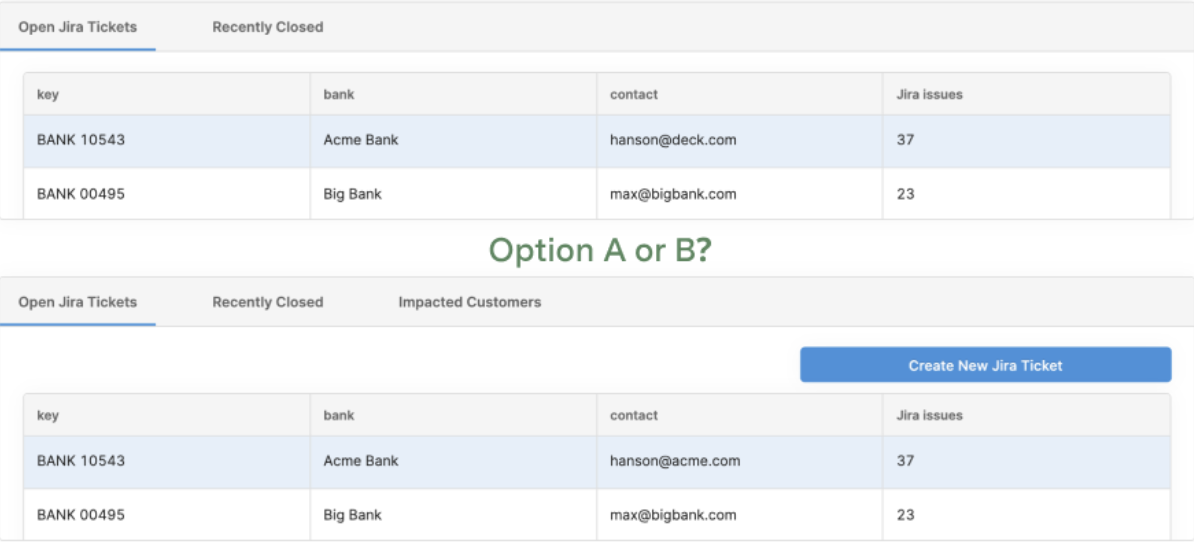
Chris makes note of the process: “Using Retool, we can throw up a few different versions of a workflow into apps, we can test all of them with the support team, and then quickly move forward with the best one. Retool allows us to be a lot more nimble, and you can spin up in 15 minutes what would normally take you a couple of hours.” Unlike with legacy tooling, this kept the app relevant and flexible to change.
Learn how to streamline and automate manual steps for your support team.
Results
Plaid has over 1,000 employees today, raised a massive $425M Series D, and is far from slowing down their growth. Their support team has also grown in size to support an even larger catalog of customers, products, and institutions.

Chris and his team compared their legacy workflows and new Retool workflows to measure their team’s progress. They found that Retool contributed to improving their average ticket resolution time by 80%. With custom tools that centralize data and automate hundreds of manual steps, Plaid's support team nearly doubled their efficiency, and they help customers much faster.
What’s next
Retool now helps around 10 Retool app builders around the Plaid organization own custom tools that the support team uses regularly and recently rated as highly useful. Emily Haahr, head of customer support, had this to say:
Our teams enjoy using Retool for customer success and, most importantly, they can champion new ways of working because Retool makes it easy to build any workflow we need. It’s helped us turn critical expertise into better support metrics across the board.
It's also helped forge a close relationship with the engineering team. Chris and team continue to uncover valuable insights only context-rich support reps can provide, while giving engineers more time to solve the biggest problems. Jean-Denis Greze, head of engineering adds:
Plaid is looking to build a strong engineering culture, where innovative ideas can be turned into best-in-class internal apps that help teams work how they want. The work our engineers have been able to do with Retool supports our goals, has made meaningful contributions to supporting our customers, and has high ROI from the engineering efforts invested so far.
Chris is excited to expand his team and keep helping the support team meet the next challenge. When asked how Retool helped him reach this point, he said:
Retool is speed. Developers care deeply about how long it takes to do something. And Retool makes development and ideation so much faster. Even if you’re going to change something multiple times, Retool helps you get there and prove out a concept super quickly.
See how to build faster financial operations like Plaid, Brex, and Coinbase using the Retool platform.